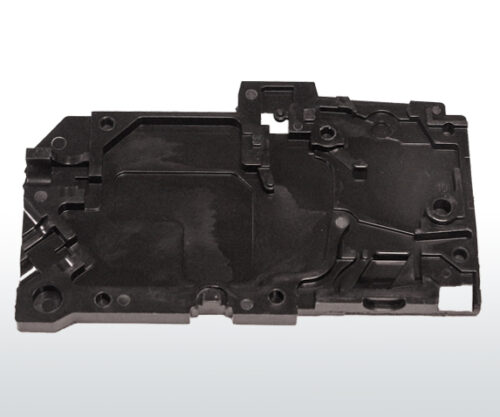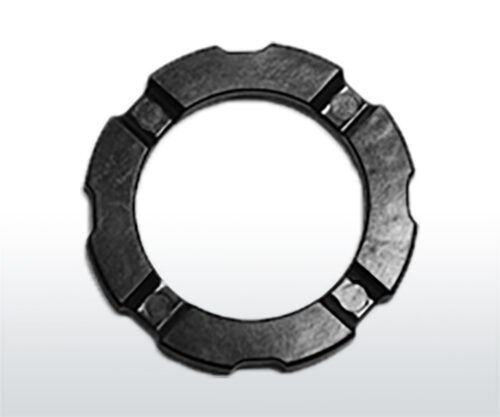Thermoset Molding for High Temperature Components
 Thermosets are used in molding applications requiring an end-part or product assembly to remain dimensionally stable within challenging and aggressive environments. Resistance to high temperatures and heat is one of the major benefits of designing a component with a molded thermoset vs a thermoplastic material. Molded thermoset parts exhibit very good dimensional stability in high heat and high operating temperatures. Thermoset materials provide components with properties of heat resistance up to 400F-500F continuous operating temperatures depending on the material formulation, whereas thermoplastic molding materials such as a nylon or ABS may disfigure, melt, or carbonize and jeopardize the integrity of a product or assembly when exposed to similar temperatures. If a part or product assembly must withstand high operating temperatures and aggressive end-use elements, choosing a thermoset as your molding material may help keep your product assembly remain safe and functioning as intended.
Thermosets are used in molding applications requiring an end-part or product assembly to remain dimensionally stable within challenging and aggressive environments. Resistance to high temperatures and heat is one of the major benefits of designing a component with a molded thermoset vs a thermoplastic material. Molded thermoset parts exhibit very good dimensional stability in high heat and high operating temperatures. Thermoset materials provide components with properties of heat resistance up to 400F-500F continuous operating temperatures depending on the material formulation, whereas thermoplastic molding materials such as a nylon or ABS may disfigure, melt, or carbonize and jeopardize the integrity of a product or assembly when exposed to similar temperatures. If a part or product assembly must withstand high operating temperatures and aggressive end-use elements, choosing a thermoset as your molding material may help keep your product assembly remain safe and functioning as intended.
 Applications such as electrical housings, covers, and terminal blocks must remain dimensionally stable under high temperatures to protect internal components from being damaged. In automotive applications, some powertrain or transmission parts may also see high operating temperatures from the engine or transmission, which can even be magnified in the summer months or with continuous use. Additionally, electrical insulators and circuit breaker applications require an insulative material to limit heat dissipation into internal electrical components or cabling. Grill handles, oven/ range components, and bases and covers for small consumer cooking appliances all rely on thermosets to not only protect internal components but allow safe handling for the customer and product user. Outside of high-cost aerospace materials, thermoplastics do not offer the same level of heat resistance and temperature deflection properties as a molded thermoset will.
Applications such as electrical housings, covers, and terminal blocks must remain dimensionally stable under high temperatures to protect internal components from being damaged. In automotive applications, some powertrain or transmission parts may also see high operating temperatures from the engine or transmission, which can even be magnified in the summer months or with continuous use. Additionally, electrical insulators and circuit breaker applications require an insulative material to limit heat dissipation into internal electrical components or cabling. Grill handles, oven/ range components, and bases and covers for small consumer cooking appliances all rely on thermosets to not only protect internal components but allow safe handling for the customer and product user. Outside of high-cost aerospace materials, thermoplastics do not offer the same level of heat resistance and temperature deflection properties as a molded thermoset will.



Comments are closed